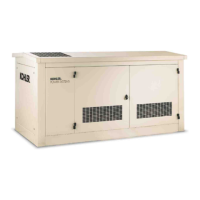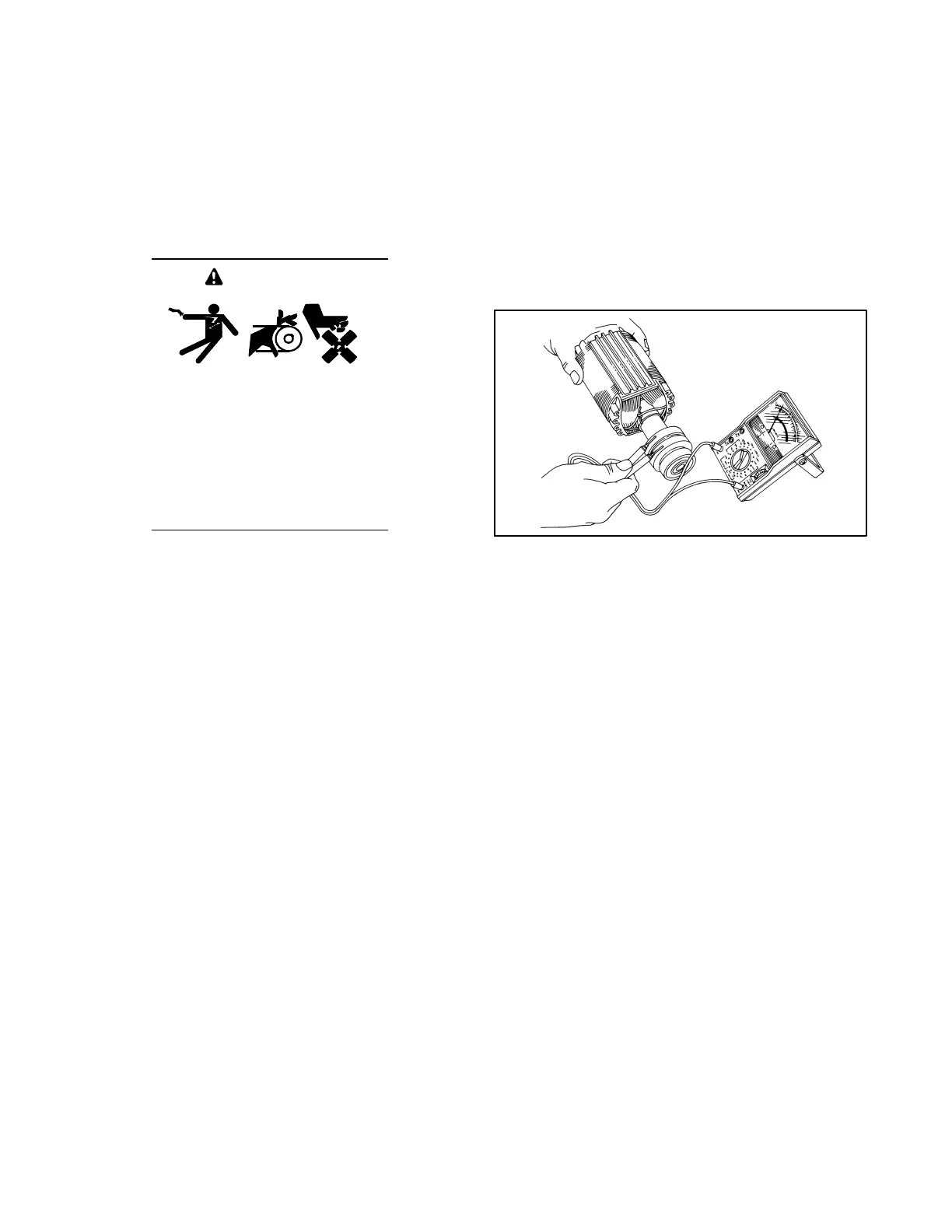TP-6198 3/15 53Section 5 Component Testing and Adjustment
5.4 Main Field (Rotor)
The two-pole rotor creates the magnetic field needed to
produce alternating current in the stator windings.
Before testing, inspect the rotor for visible damage to
pole shoes, insulation, exposed coil windings, and slip
ring surfaces. Rotate the bearing to check for wear, heat
discoloration, or noise.
Rotor Continuity and Resistance Tests
Accidental starting.
Can cause severe injury or death.
Disconnect the battery cables before
working on the generator set.
Remove the negative (--) lead first
when disconnecting the battery.
Reconnect the negative (--) lead last
when reconnecting the battery.
WARNING
Disabling the generator set. Accidental starting can
cause severe injury or death. Before working on the
generator set or connected equipment, disable the generator
set as follows: (1) Move the generator set master switch to the
OFF position. (2) Disconnect the power to the battery charger.
(3) Remove the battery cables, negative (--) lead first.
Reconnect the negative (--) lead last when reconnecting the
battery. Follow these precautions to prevent starting of the
generator set by an automatic transfer switch, remote
start/stop switch, or engine start command from a remote
computer.
High voltage test. Hazardous voltage can cause severe
injury or death. Follow the instructions of the test equipment
manufacturer when performing high-voltage tests on the rotor
or stator. An improper test procedure can damage equipment
or lead to generator set failure.
Rotor Test Procedure
1. Place the generator set master switch in the OFF
position.
2. Disconnect power to the battery charger.
3. Disconnect the generator set engine starting
battery, negative (--) lead first.
4. Remove the brush cover from the alternator end
bracket.
5. Check the rotor for continuity and resistance.
Raise the brushes from the slip rings while
performing ohmmeter tests. Measure the rotor
resistance (ohms) between the two slip rings; see
Figure 5-9. See Section 1.5, Alternator
Specifications, for rotor resistance readings. If the
resistance readings are low, perform a
megohmmeter test on rotor as described in the
next step.
Note: Because ohmmeter accuracy varies,
resistance readings are approximate. Take
readings at room temperature.
2-221
R13929-7
Figure 5-9 Rotor Resistance Check
6. Perform a megohmmeter test to determine
whether the rotor is shorted to g round.
a. Raise and secure the brushes away from the
slip rings by inserting a retaining wire in the
brush holder hole.
b. Using a megohmmeter, apply 500 volts DC to
one rotor slip ring and the rotor poles or shaft.
Follow the instructions of the megohmmeter
manufacturer when performing this test.
Note: A reading of approximately 500 kOhms
(1/2 megohm) or higher indicates a
good rotor.
c. Repair or replace the rotor if the reading is less
than approximately 500 kOhms. A reading of
less than 500 kOhms indicates deterioration of
the winding insulation and possible current flow
to ground.
d. Following the test, remove the retainer wire
from the brush holder and check the brush
positions on the slip rings. See Section 5.6,
Brushes.
e. Reinstall the brush cover on the end bracket.

